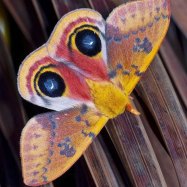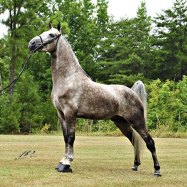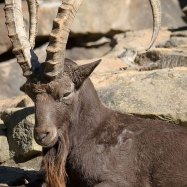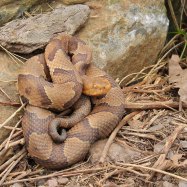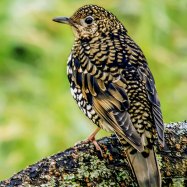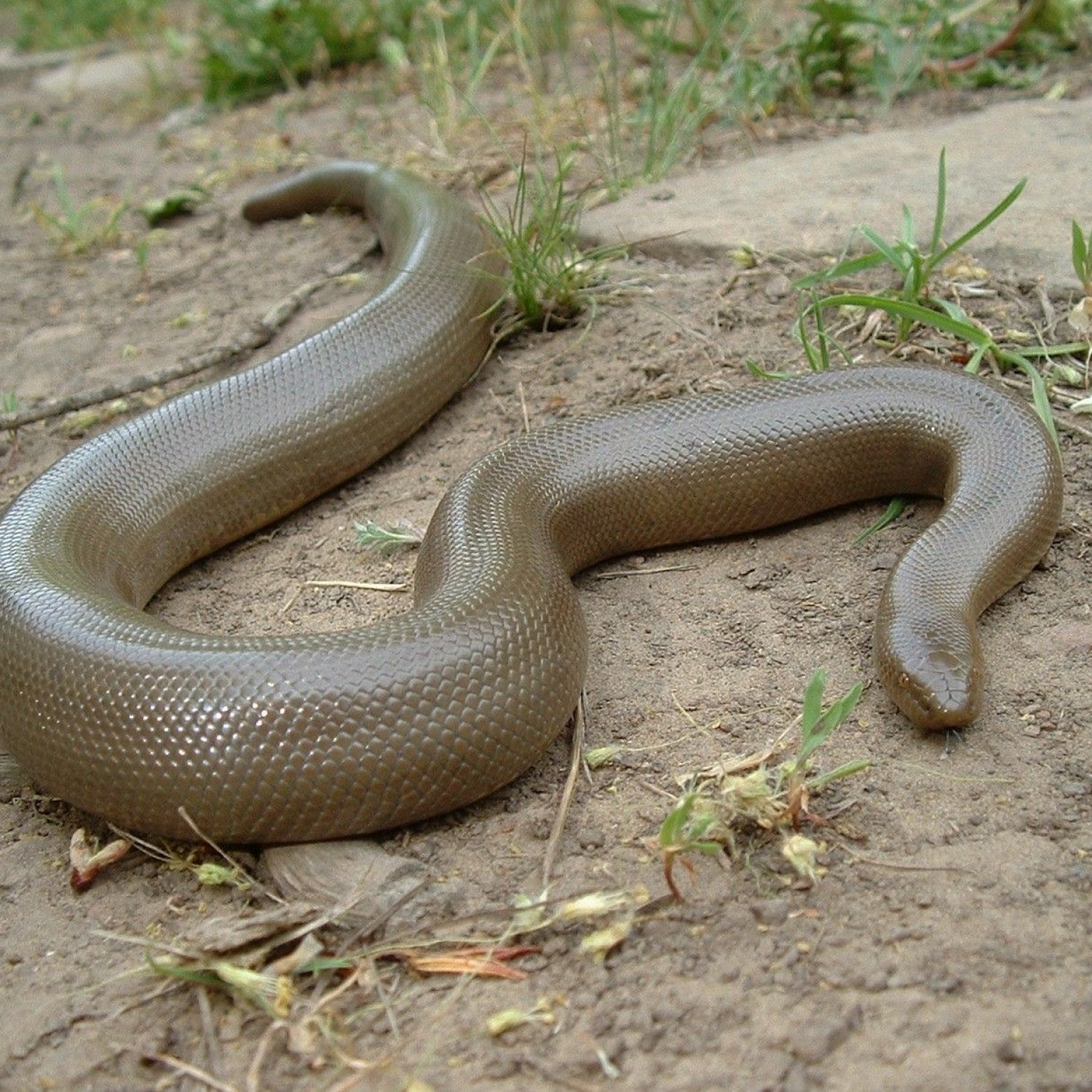
Rubber Boa
Average length of 15-33 inches
The Rubber Boa is a fascinating snake found in Western North America. This slow-moving constrictor is a great pet for reptile enthusiasts due to its calm nature. With an average length of 15-33 inches and a cylindrical, smooth body shape, the Rubber Boa is easy to care for. It belongs to the Boidae family, making it closely related to other popular snakes such as pythons and boas. Don't let its name fool you, this boa is not a threat to humans and is a valuable predator of small rodents in its natural habitat.
Animal Details Summary:
Common Name: Rubber Boa
Kingdom: Animalia
Habitat: Woodland areas
The Fascinating Rubber Boa: A Master of Camouflage
Have you ever heard of a snake that looks and feels like rubber? Meet the rubber boa, a unique and fascinating reptile that is a master of camouflage. With its distinctive appearance and impressive survival skills, this creature has captured the attention of many researchers and wildlife enthusiasts. In this article, we will dive deep into the world of rubber boas and discover what makes them so fascinating.Meet the Rubber Boa
Scientifically known as Charina bottae, the rubber boa is a non-venomous snake found in North America Rubber Boa. It is also commonly known as the rubber boa due to its rubbery appearance and texture. It belongs to the Boidae family, a group of snakes known for their powerful but non-venomous constriction abilities.Rubber boas are mainly found in woodland areas, but they also inhabit grasslands, mountains, and deserts. They are primarily found in western North America, with their range extending from British Columbia in Canada to northern Mexico. In the United States, they are mostly found in the western states, including California, Oregon, Washington, Idaho, Montana, and Nevada.
With their unique appearance and secretive nature, rubber boas are not as well-known as other snake species. However, these creatures play a vital role in their ecosystem and have several interesting features that set them apart from other snakes.
Appearance and Physical Features
Rubber boas are relatively small in size, with an average length of 15-33 inches. However, some individuals can grow up to 3 feet in length Rottle. They have a cylindrical body shape, which is relatively thinner at the head and thicker towards the tail. Their smooth skin is highly textured, and they have a shiny appearance, which adds to their rubber-like appearance.One of the most distinctive features of rubber boas is their coloration. They have a range of colors, including yellowish-brown, dark brown, or olive. They often have a reddish-pink hue on their belly, and some individuals may have dark markings on their back. Their coloration is an essential adaptation for survival, as it helps them blend in perfectly with their surroundings.
The head of the rubber boa is relatively small and round, with small eyes and a blunt snout. They also have small, non-functional spurs behind their cloacal opening, which is a remnant of their evolutionary history. This feature is more prominent in males than in females.
Habitat and Behavior
As mentioned earlier, rubber boas are mainly found in woodland areas, but they can adapt to various habitats. They are often found in moist and cool areas, such as under logs, rocks, or in burrows dug by other animals. They are also good climbers and can be found in trees during the warmer months.Rubber boas are primarily nocturnal and spend most of their time hidden away. They are also solitary creatures, only coming together during the breeding season. Unlike many other snake species, they do not bask in the sun or hunt during the day. This makes them challenging to spot in the wild.
As for their behavior, rubber boas are known for their docile nature. They are not aggressive towards humans and rarely bite, even when provoked. In fact, they are known to curl into a ball when threatened, which earned them the nickname "coiled in rubber."
Diet and Feeding Habits
Rubber boas are carnivorous and feed on a variety of prey, including small mammals, birds, reptiles, and amphibians. Due to their docile nature, they rely on ambush tactics rather than chasing down prey like other snake species. They use their powerful constriction abilities to subdue their prey, which is then swallowed whole, head first.Feeding habits of rubber boas vary depending on their environment. In warmer regions, they may have a more extended period of activity and feed more often. However, in colder areas, where they hibernate during winter, they may have a shorter feeding period.
Reproduction and Lifecycle
Rubber boas reach sexual maturity at around 4-5 years of age. Breeding occurs annually during spring or early summer, with females laying 2-9 eggs. Unlike many other snake species, rubber boas do not lay eggs in a clutch; instead, they lay one egg at a time over a period of several weeks. After laying the eggs, the female will wrap her body around them to provide warmth and protection.The eggs take around 90 days to hatch, and the young are independent from the moment they hatch. They receive no parental care and are left to fend for themselves. Rubber boas have an average lifespan of 25-30 years in the wild, making them one of the longest-living snake species.
The Importance of the Rubber Boa in its Ecosystem
Like any other animal, rubber boas play a crucial role in their ecosystem. They are both predators and prey, forming a vital part of the food chain. As predators, they help control populations of small mammals, which can have a significant impact on plant life.As prey, rubber boas are a food source for a variety of animals, including birds of prey, coyotes, and larger snake species. They also contribute to nutrient recycling in the environment, as their feces provide essential nutrients for soil and plants.
Conservation Status and Threats
According to the International Union for Conservation of Nature (IUCN), the rubber boa is listed as a species of least concern. However, this does not mean they are entirely safe from threats.One of the main threats to rubber boas is habitat destruction. As their preferred habitats are often in woodland areas, deforestation and habitat fragmentation have a significant impact on their population. They are also at risk of being killed by cars when crossing roads.
Another threat comes from the pet trade. Rubber boas are often illegally captured and sold as pets, which can be detrimental to their population growth in the wild. It is essential to only acquire these animals from reputable breeders and never take them from the wild.
The Fascinating World of Rubber Boas
Rubber boas may not be as well-known as other snake species, but they are an essential part of the ecosystem. With their unique appearance and impressive survival abilities, they have captured the imaginations of many. However, their secretive nature and elusive behavior make them challenging to study, and there is still much to learn about these fascinating creatures.If you ever get the chance to spot a rubber boa in the wild, consider yourself lucky. These elusive creatures are true masters of camouflage and play a vital role in the delicate balance of nature. Let's continue to admire them from afar and do our part in preserving their habitats for future generations to enjoy.

Rubber Boa
Animal Details Rubber Boa - Scientific Name: Charina bottae
- Category: Animals R
- Scientific Name: Charina bottae
- Common Name: Rubber Boa
- Kingdom: Animalia
- Phylum: Chordata
- Class: Reptilia
- Order: Squamata
- Family: Boidae
- Habitat: Woodland areas
- Feeding Method: Carnivorous
- Geographical Distribution: North America
- Country of Origin: United States and Canada
- Location: Western North America
- Animal Coloration: Varies from yellowish-brown to dark brown or olive
- Body Shape: Cylindrical and smooth
- Length: Average length of 15-33 inches
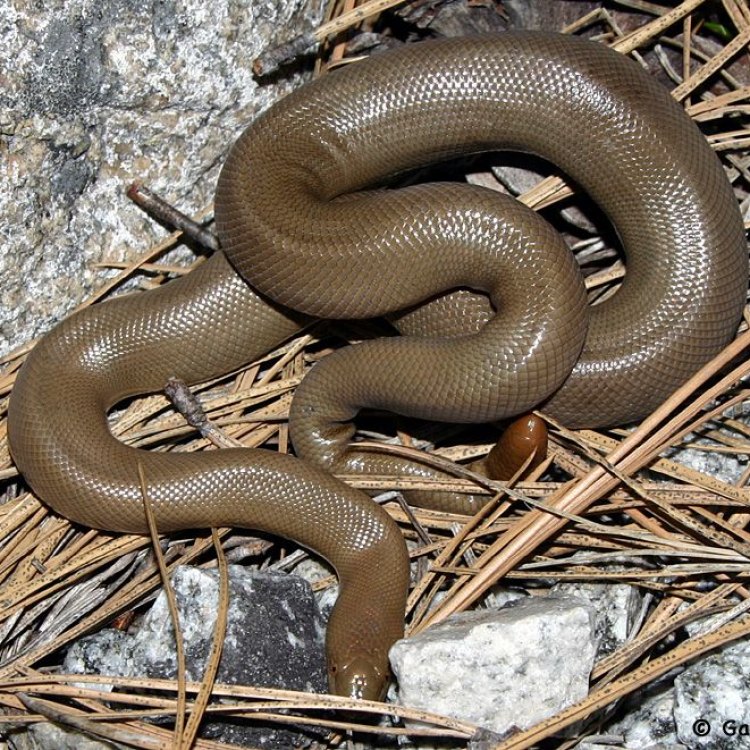
Rubber Boa
- Adult Size: Up to 3 feet
- Average Lifespan: Up to 25 years in captivity
- Reproduction: Oviparous (egg-laying)
- Reproductive Behavior: Males engage in courtship behavior
- Sound or Call: No significant vocalizations
- Migration Pattern: Non-migratory
- Social Groups: Solitary
- Behavior: Nocturnal and secretive
- Threats: Habitat loss and fragmentation
- Conservation Status: Least Concern
- Impact on Ecosystem: Plays a role in rodent control
- Human Use: No significant human use
- Distinctive Features: Rubbery appearance, small eyes, blunt tail
- Interesting Facts: Rubber boas are known to be docile and make popular pets among reptile enthusiasts
- Predator: Birds, mammals, and larger snakes
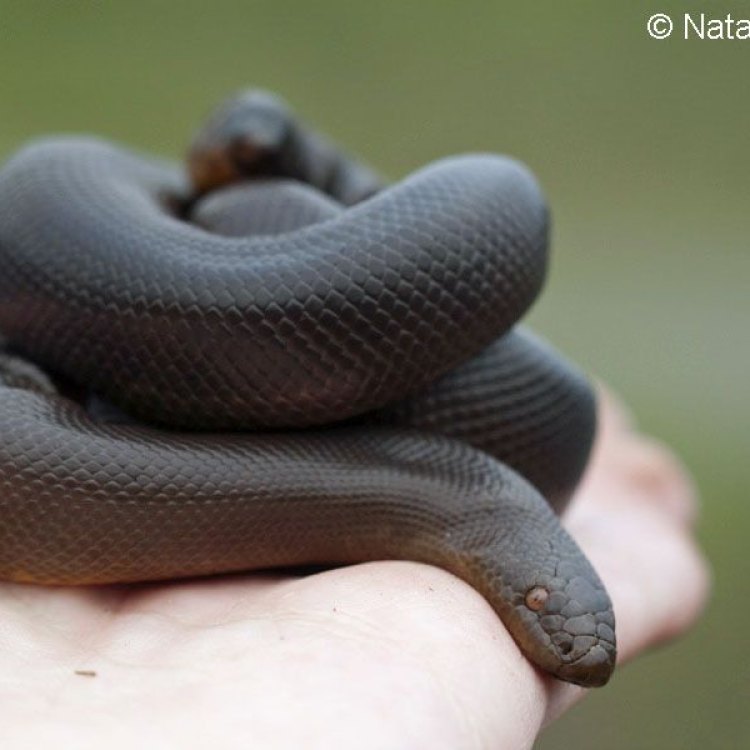
Charina bottae
The Fascinating World of Rubber Boas: The Secretive and Mysterious Serpent
Deep in the forests of North America lies a small and often overlooked species of serpent - the rubber boa. Despite its unassuming appearance, this unique snake has captivated the hearts and minds of reptile enthusiasts and scientists alike with its distinctive features and fascinating behaviors. In this article, we will explore the world of rubber boas, from their physical characteristics to their important role in the ecosystem.Native to the western regions of North America, the rubber boa (Charina bottae) is a small, non-venomous snake that is often mistaken for a worm due to its rubbery appearance and small eyes PeaceOfAnimals.Com. It is the only member of its genus and is also commonly known as the western rubber boa or Pacific rubber boa. With an adult size of up to 3 feet, the rubber boa may not be the largest snake, but what it lacks in size, it makes up for in its remarkable features and behavior.
One of the most interesting aspects of the rubber boa is its reproductive behavior. As an oviparous species, the female rubber boa lays eggs to give birth to their young. This is in contrast to most snakes, which are viviparous, meaning they give birth to live young. The female rubber boa can lay between 4 to 8 eggs, which she will then coil around to keep warm and protected until they hatch. This process can take up to 4 months, and the hatchlings are born fully developed and ready to explore their habitat.
An intriguing behavior exhibited by male rubber boas is their courtship ritual. During the breeding season, male rubber boas will engage in a unique courtship dance to attract females Racer Snake. This involves the male rubbing its chin against the female's back and occasionally wrapping its body around hers. This dance can last for hours and is a crucial part of the mating process for these solitary snakes.
Despite its name, the rubber boa does not make any significant vocalizations. In fact, this species is known to be relatively quiet and stealthy, making it difficult to detect in the wild. This is due to its nocturnal and secretive nature, with most of its activity occurring at night. During the day, rubber boas will hide under rocks, logs, or burrow underground to avoid predators and conserve energy.
Speaking of predators, the rubber boa has a few natural enemies in its habitat. Birds, mammals, and larger snakes such as racers and bullsnakes are known to prey on rubber boas. However, their prey rarely has the chance to see the rubber boa due to its excellent camouflage and elusive behavior. The rubber boa's small size and rubbery skin also make it difficult for larger predators to grip onto, making it a challenging meal to catch.
One of the most distinctive features of the rubber boa is its blunt tail, which resembles the head of the snake. This unique adaptation is thought to help the snake confuse and deter predators. When threatened, the rubber boa will tuck its head into its coils, leaving its tail exposed and ready to mimic its head and confuse the predator. Additionally, the rubber boa's dull color and rough, rubbery scales aid in its camouflage and make it hard to spot in its natural habitat.
Unfortunately, habitat loss and fragmentation pose significant threats to the rubber boa's survival. As human development continues to expand, the rubber boa's habitat is being destroyed, leaving less space for these creatures to thrive. Fragmentation of their habitat also makes it challenging for rubber boas to find mates and establish territories. Consequently, the International Union for Conservation of Nature (IUCN) has listed the rubber boa as Least Concern in terms of conservation status. However, it is crucial to continue monitoring their populations and addressing any potential threats to ensure their long-term survival.
While the rubber boa may not be a popular pet compared to more well-known species like corn snakes and ball pythons, it has gained a following among reptile enthusiasts due to its docile nature. These snakes are known to be gentle and easy to handle, making them popular among beginners and experienced snake owners alike. However, it's important to note that in some areas, capturing or possession of rubber boas is illegal, so it's essential to research and follow the regulations in your region before considering them as a pet.
Apart from their popularity among reptile enthusiasts, rubber boas also play an essential role in the ecosystem. As a predator to small rodents, they help control their populations, which can otherwise cause significant damage to crops and vegetation. In this way, rubber boas play a crucial role in maintaining balance and harmony in their ecosystem.
In conclusion, the rubber boa may not be the most well-known or flashy snake, but it certainly deserves recognition for its unique features and behavior. From its rubbery appearance and secretive nature to its distinct reproductive behavior and important role in rodent control, the rubber boa is a remarkable and fascinating species. As we continue to learn more about these elusive creatures and work towards conserving their habitats, we can ensure that future generations will have the chance to appreciate the beauty and significance of the rubber boa in the wild.
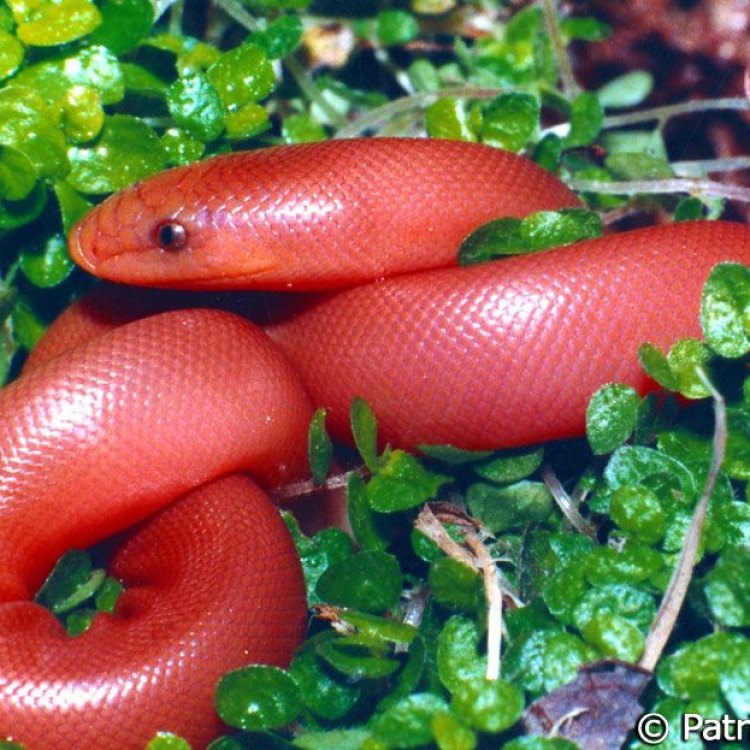
The Fascinating Rubber Boa: A Master of Camouflage
Disclaimer: The content provided is for informational purposes only. We cannot guarantee the accuracy of the information on this page 100%. All information provided here may change without prior notice.


